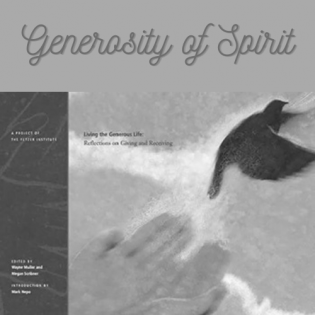Australian Folktales
These Australian folktales compare selfish and unselfish behaviors and tell the origin story of our permanent responsibility as caretaker of the land.
The learner will:
- identify the historical and geographic settings of folktales.
- identify the message and connections to philanthropy.
- describe how caretaking is an act of philanthropy.
Youth access to these folktales (Learning to Give has permission to make these folktales available online to readers):
- "How the Kangaroo Got Her Pouch." Flood, Bo, Beret E. Strong and William Flood. Pacific Island Legends: Tales from Micronesia, Melanesia, Polynesia, and Australia. Honolulu, Hawai’i: Bess Press, ©1999, pp.248-251. Used with permission of Bess Press, Inc. https://besspress.com/.
- "How the Selfish Goannas Lost Their Wives." Smith, Dr. W. Ramsay (edited by). Myths and Legends of the Australian Aboriginals. London: George G. Harrap and Co. Ltd., ©1930. Pp. 84-91. Used with the permission of Chambers Harrap Publishers Ltd. http://www.chambersharrap.co.uk/
- "The Secret of Dreaming." Poulter, Jim and illustrated by Mark Smith. The Secret of Dreaming: The Story of Why the Land Is Sacred and Why Man Must Be Its Caretaker. Templestowe: Victoria: Ren Hen, ©1988. Used with the permission of Jim Poulter. http://www.jimpoulter.com/
Instructions
Anticipatory Set:
Define Outback and Aboriginal in the context of Australia and refer to a map.
The folktales in this lesson are from the Aboriginal people of Australia. On a map, locate Australia’s absolute location and relative location. Describe Australia's physical characteristics and human characteristics. Look at human/environment relations in Australia. In the dry/desert areas of the continent, people have to adapt to a harsh environment.
Read "The Secret of Dreaming" together and discuss the message and connection to philanthropy.
- What does dreaming represent (what is its secret)?
- When the Secret of Dreaming was passed on to the Spirit of Man, what was different about what man did that allowed creation to be completed?
- Why did the Spirit of Man decide that he must protect the Secret of Dreaming (creation)?
- Why must the Spirit of Man be the Caretaker of the land?
- In what way is being a caretaker of the land an act of "giving"? Why is it important that everyone share this responsibility?
Read "How the Kangaroo Got Its Pouch" together and discuss the message and connection to philanthropy. Define unfamiliar terms and discuss the following:
- What are the clues to the character of the mother kangaroo?
- If the mother kangaroo had been killed, she would have put the life of her joey in danger. Was her decision to distract the hunter away from the wombat sensible?
- Why does the god Byamee reward all marsupials rather than just the mother kangaroo? What are the benefits and dangers of characterizing an entire group by one individual’s actions?
- What is the lesson of the folktale?
Read "How the Selfish Goannas Lost Their Wives" together and discuss the message and connection to philanthropy. The story takes place near the River Murray which is in South Australia. The Murray-Darling is Australia’s longest river system and ranks fifteenth in the world. Locate the area on a map. define unfamiliar terms and discuss the following:
- What is the motivation of the goanna husbands?
- Folktales hold up a mirror to human nature. What does this story say about human nature?
- Compare the goannas and teal teal with a T-chart.
- The Tuckonie insists that the chief’s wife keep the great event in remembrance, telling her children of the privilege she was given as a blessing to all. Why is it important to remember great events?
- Discuss the lesson(s) from this story.
Philanthropy Framework
-
Strand PHIL.II Philanthropy and Civil Society
-
Standard PCS 03. Philanthropy and Economics
-
Benchmark HS.13 Give examples of how philanthropy has reallocated limited resources through giving and citizen action.
-
-
-
Strand PHIL.III Philanthropy and the Individual
-
Standard PI 01. Reasons for Individual Philanthropy
-
Benchmark HS.1 Define and give examples of motivations for giving and serving.
-
Benchmark HS.3 Describe and compare stewardship in a variety of cultural traditions.
-
-
